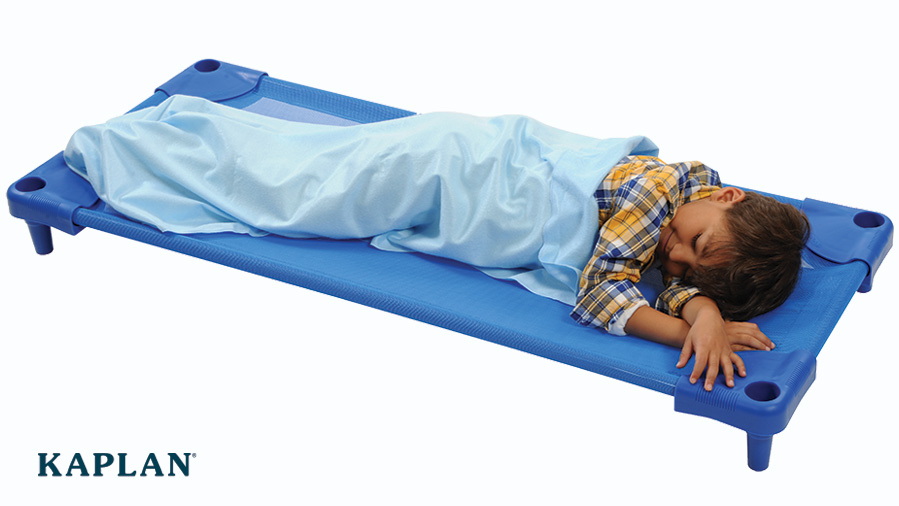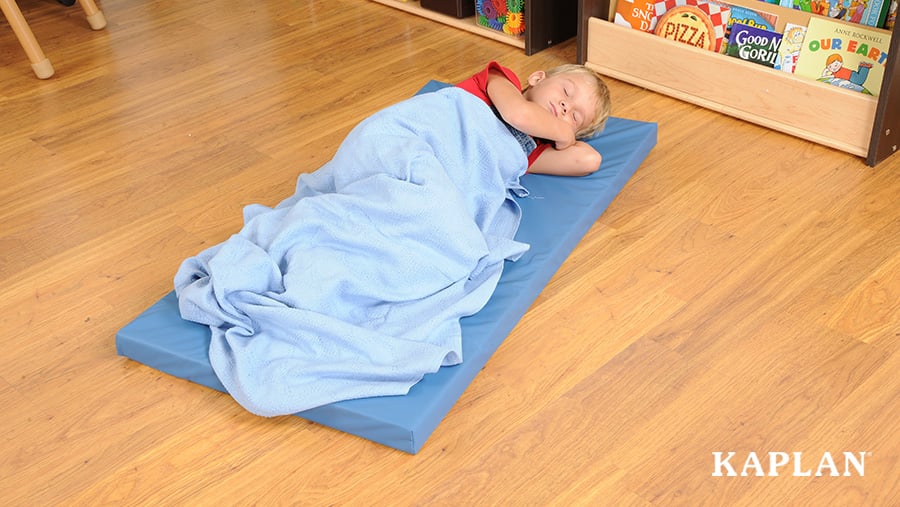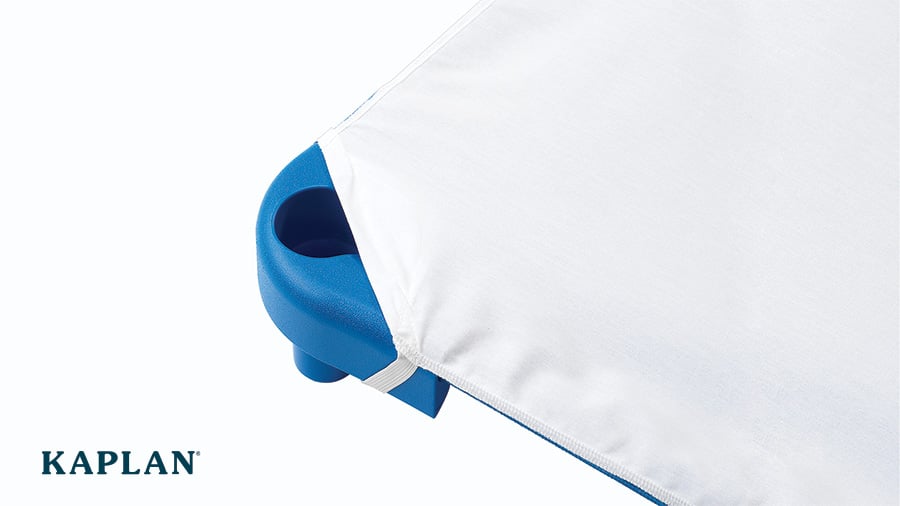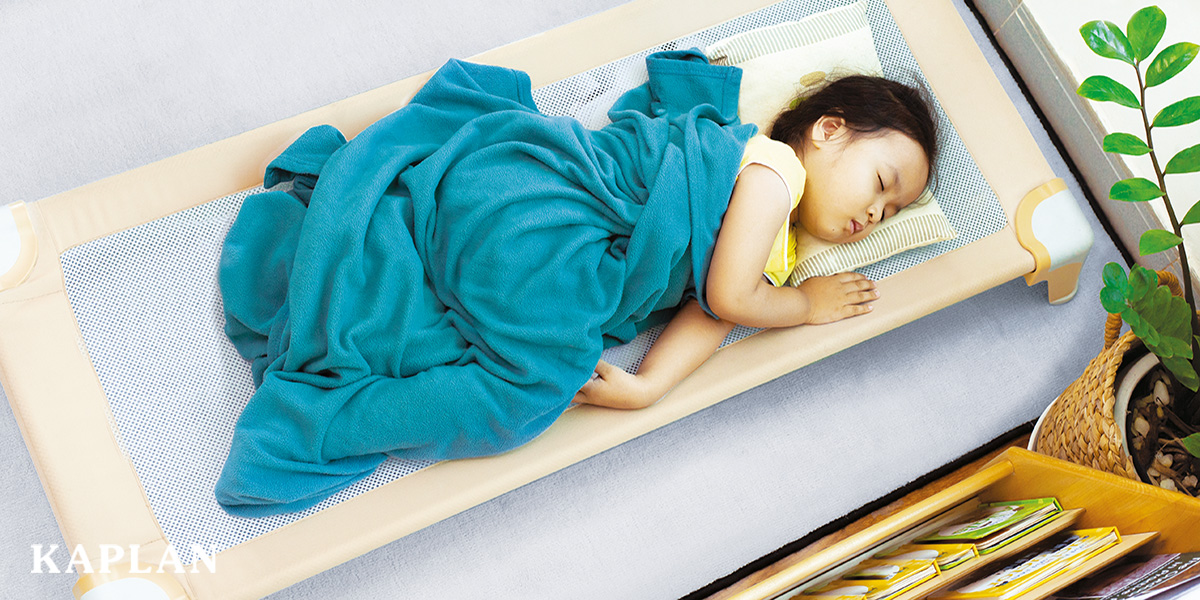As an educator, you know the importance of giving the young children in your classroom proper rest. You also know that comfortable, durable sleeping surfaces are necessary to make that happen. However, you may have trouble choosing between the many mat and cot options that are available. You are probably wondering: are cots and mats basically the same, or are there actual differences between them? What is the difference in price and warranty? Is one kind better for my specific classroom?
Here at Kaplan, we have been making and selling classroom cots and mats for decades, so we know the similarities and differences between them as well as which classroom spaces are better suited to one of the two. In this article, we will talk about the differences between cots and mats so that you can know which one is best for your classroom.
How Do Cots and Mats Compare with One Another?
Mats and cots both serve the same basic purpose–to give your students a place to rest–but they are not the exact same product. There are differences in their material, structure, and cost.
Cots and mats are made of different materials. Cots are typically made of nylon, mesh fabric, and mats are typically made of waterproof, washable vinyl. Cots also have legs that elevate them off the ground while mats lie directly on the floor.


Cots generally tend to be more expensive than mats because cots have more materials. Cots have fabric, steel tubes, and legs made of plastic molds. Mats only have a foam interior and a vinyl covering. Precise differences in price vary according to specific mats and cots, but the dollar difference between the two is typically about $20. For example, a primary blue rest mat from Kaplan costs $59.95, and a dark blue standard cot costs $79.95. Similarly, Lakeshore Learning’s rainbow rest mat costs $61.99, and its easy-stack cot costs $79.99.
Is a Cot or a Mat Better for My Classroom?
There are a few factors to consider when you are trying to decide between cots and mats. Money is an obvious one. If you have a tight budget or are buying for a lot of students (or both!), mats are probably the best option because they are cheaper. In addition to money, however, there are some other factors you need to consider when choosing between a cot and a mat.
Sanitation of the Equipment
Cots are more sanitary because they have legs that lift them off the floor. This prevents them from being exposed to dirt, germs, or other unsanitary things that lie on the floor. Cots are also more sanitary when stacked because the legs prevent one cot from being directly on top of another. This means that the part of the cot that touches the floor is not mashed against the top of another child’s cot! Since mats do not have legs, they are naturally going to be right on top of one another when stacked, so you would have to take extra precautions such as putting some sort of protective material (like a sheet) between each mat to prevent direct contact between the bottom of one mat and the top of another.
Ease of Use for Teachers and Students
Cot sheets are easier to put on than mat sheets because cot sheets are fitted to cot legs. This means you would not need to maneuver the cot to get sheets on it in the same way that you would a mat. This easier method could enable the students to put the sheets on themselves, which would be a simple way for them to learn a new skill and establish patterns of self-help. It is important for young children to practice self-help wherever possible because doing tasks on their own will increase their self-confidence and sense of responsibility. Although putting on cot sheets is a good opportunity for self-help, it is worth noting that both mats and cots could create self-help opportunities. For example, you could have each child carry their mat to the storage shelf or their cot to the cot carrier.

Classroom Size and Storage Space
In terms of storage, mats–especially foldable mats–take up less space than cots. They can easily be stored against the wall or in the corner of your classroom. You could also store some of your mats in a storage unit like this two-shelf one that Kaplan offers.
You could not fit as many cots into a storage unit as you could mats because cot legs make the cots taller. For cot storage, it is best to get a cot carrier, which is an extra expense and can take up storage space itself. If you have a limited amount of space in your classroom, mats may be the better option.
Durability and Warranty
Mats last longer than cots. After long periods of use, cot mesh will start to sag and rip. Mats, on the other hand, can last as many as ten years in the classroom. That said, mats are still prone to damage because the vinyl can rip easily if children do something like kick against the mat with their feet.
Cots have longer warranties than mats. Most cots, including both of the cots Kaplan makes, have a ten-year warranty. Mats typically have a 1-2 year warranty. For example, Kaplan sells a mat that has a one-year warranty and a mat that has a two-year warranty.
Comfort
Cots are more comfortable than mats because they do not have children lie directly on a hard floor. Some floors can also be cold–especially during the winter–so cots would do more to help children stay warm.
Check Requirements Before You Buy
Before you decide on a mat or a cot, be sure to check your state’s licensing requirements regarding cots and mats. While not all do, some states have dimensional specifications for cots and mats that licensed childcare centers must follow. For example, Ohio requires a cot to be at least 36 inches long and between 3 and 18 inches off the floor. So, make sure that the cot or mat you buy aligns with your state’s standards.
Next Steps
We hope this article will give you some clarity as you decide between cots and mats. If you are interested in seeing some specific cots and mats, check out Kaplan’s stackable cots, premium cots, and rest mats. As you decide, take comfort in the fact that you will be ensuring your students get the crucial rest they need–no matter what option you choose!

